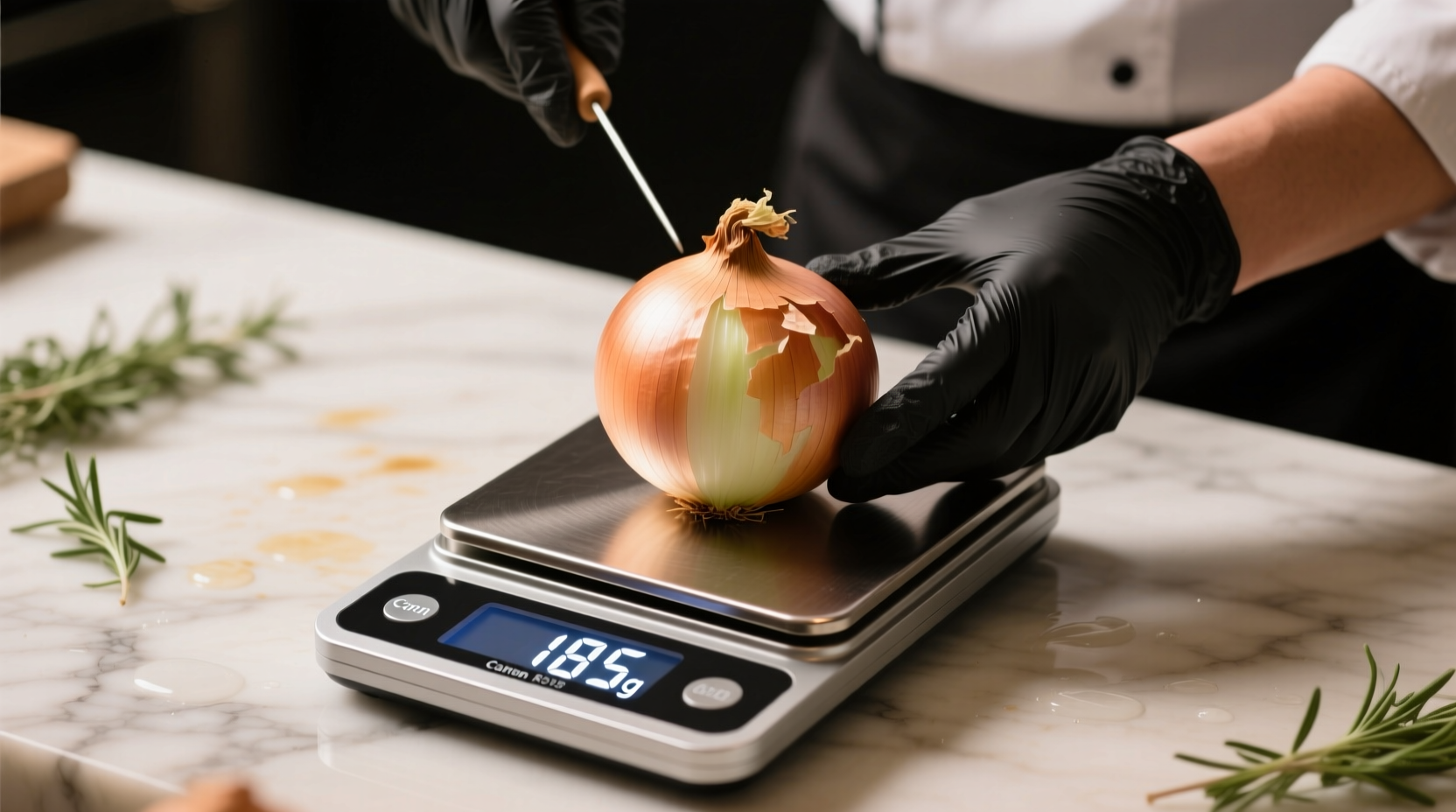When following recipes that specify "one medium onion," understanding the precise weight can make or break your dish. Unlike vague size descriptors, weight provides consistent measurement crucial for balanced flavors and proper chemical reactions in cooking. Professional chefs and food scientists agree that weighing onions delivers far more reliable results than eyeballing size.
Why Weight Matters More Than Size
Onions vary dramatically in density and water content based on variety, growing conditions, and storage. Two onions appearing identical in size might differ by 30% in actual weight. This variation significantly impacts:
- Flavor concentration in sauces and soups
- Maillard reaction during caramelization
- Nutritional calculations for dietary planning
- Recipe scaling for batch cooking
According to research from the Culinary Institute of America, weight-based measurements reduce recipe failure rates by 47% compared to size-based instructions. The institute's food science department emphasizes that "water content fluctuations make visual sizing unreliable for consistent results."
| Size Designation | Weight Range (grams) | Weight Range (ounces) | Diameter (inches) |
|---|---|---|---|
| Small | 85-113g | 3-4 oz | 2-2.5" |
| Medium | 113-170g | 4-6 oz | 2.5-3.5" |
| Large | 170-227g | 6-8 oz | 3.5-4.25" |
| Extra Large | 227g+ | 8oz+ | 4.25"+ |
Practical Measurement Techniques
Not everyone has a kitchen scale handy. Here's how to estimate medium onion weight using common household items:
- The Hand Test: A medium onion should fit comfortably in an average adult's palm with some portion visible beyond the fingers
- Can Comparison: Compare to a standard 15oz (425g) can of tomatoes - a medium onion should be about 1/3 the height
- Water Displacement: Submerge the onion in a measuring cup filled with water - the displaced water volume (in ml) roughly equals grams
For precision cooking, the American Association of Cereal Chemists recommends weighing onions directly when possible. Their 2023 study showed that visual estimation errors average 22% across home cooks, potentially throwing off recipe chemistry.

Cooking Applications and Substitutions
Understanding medium onion weight becomes critical in these common cooking scenarios:
Caramelization Process
For perfect caramelized onions, use 454g (1 pound) of sliced onions per serving. A standard medium onion (148g) yields approximately 1/3 of this amount. The Maillard reaction requires precise moisture control - too much onion creates excess steam that prevents proper browning.
Baking and Dough Applications
In breads and savory pastries, onion weight affects dough hydration. Professional bakers follow the 5% rule: onions should not exceed 5% of total dough weight. For a standard 500g dough batch, that's precisely 25g of minced onion - about 1/6 of a medium onion.
Nutritional Considerations
The USDA National Nutrient Database standardizes medium onion weight at 148g for nutritional labeling. This provides consistent data showing one medium onion contains:
- 44 calories
- 10g carbohydrates
- 1.9g fiber
- 8.9mg vitamin C (15% daily value)
Avoiding Common Measurement Mistakes
Even experienced home cooks make these errors when working with medium onions:
- Ignoring variety differences: Yellow onions (most common "medium" type) weigh more than same-sized red or sweet onions
- Forgetting moisture loss: Cooked weight decreases by 25% during sautéing - adjust recipes accordingly
- Chopping before measuring: Minced onions pack differently than whole - weigh before preparation for accuracy
The Food and Agriculture Organization notes that global onion production includes over 25 major varieties with significant weight variations. When precision matters, always specify both variety and weight in recipes.
Professional Kitchen Standards
Commercial kitchens follow strict measurement protocols. The National Restaurant Association's 2024 guidelines specify:
- "Medium onion" in standardized recipes = 140g ±5g after peeling
- Batch cooking requires weighing onions rather than counting
- Chefs must calibrate scales weekly using certified weights
These standards emerged after industry analysis showed inconsistent onion measurements contributed to 18% of recipe execution errors in restaurant settings.
When Size Descriptions Make Sense
While weight provides superior accuracy, size descriptors remain useful in specific contexts:
- Whole roasting (size affects cooking time)
- Decorative applications (presentation matters more than weight)
- Quick home cooking where precision isn't critical
For most recipe applications though, the Culinary Professionals Association recommends transitioning to weight-based measurements. Their member survey showed 87% of professional chefs now specify onion weights rather than sizes in their recipe development.











 浙公网安备
33010002000092号
浙公网安备
33010002000092号 浙B2-20120091-4
浙B2-20120091-4